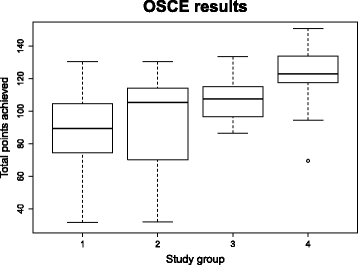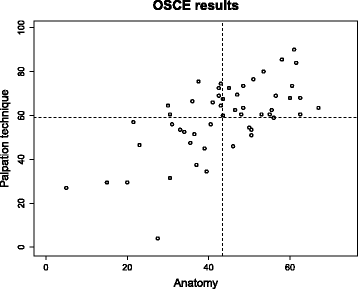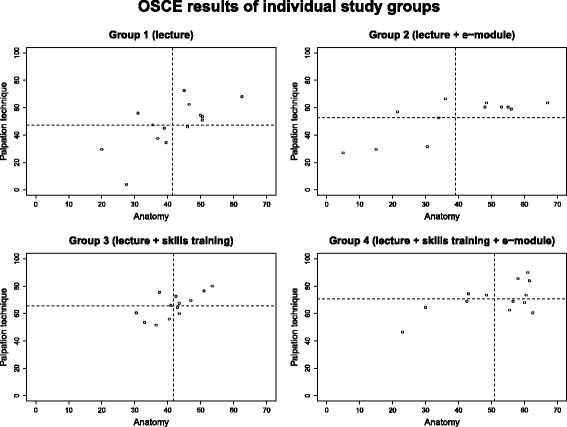Anatomy meets dentistry! Linking anatomy and clinical practice in the preclinical dental curriculum
- PMID: 27887620
- PMCID: PMC5123369
- DOI: 10.1186/s12909-016-0825-8
Anatomy meets dentistry! Linking anatomy and clinical practice in the preclinical dental curriculum
Abstract
Background: Establishing a strong link early on between preclinical coursework and the clinical context is necessary for students to be able to recognize the practical relevance of the curriculum during their preclinical anatomical courses and to transfer knowledge more easily. Our objective was to enhance the clinical relevance of a preclinical anatomy course for second-year medical students of dentistry by implementing an interdisciplinary skills training course on "Palpation of the Head and Neck Muscles" and to measure the learning outcomes.
Methods: For the curricular development of the expanded course module, Kern's 6-step approach was applied including subjective evaluation. We used a peer-teaching format supported by an e-learning application. A randomized control study measured effects of the two components (skills training, e-module) on learning outcomes. Four learning methods were compared: (1) lecture, (2) lecture + e-module, (3) lecture + skills training, (4) lecture + skills training + e-module. An objective structured clinical examination (OSCE) was used to measure and compare learning outcomes.
Results: The two-way variance analysis demonstrated that participation in the skills training had a statistically significant effect on the OSCE results (p = 0.0007). Students who participated in the skills training did better (φ 107.4 ± 14.4 points) than students who only attended the lecture (φ 88.8 ± 26.2 points). Students who used the e-module but did not attend the skills training earned a slightly but not significantly higher average number of points (φ 91.8 ± 31.3 points) than those who only attended the lecture. The learning outcomes of the skills training were again significantly increased when the training was combined with the e-module (φ 121.8 ± 21.8 points), thus making it the ideal method for achieving the learning objectives defined in this study.
Conclusions: The "Palpation of the Head and Neck Muscles" interdisciplinary skills training course linking basic anatomical knowledge and clinical skills led to clearly improved learning outcomes for both, anatomical knowledge and clinical skills. The additional use of an e-learning tool (e-module) improved the learning effect.
Keywords: Anatomy; Clinical skills; Dentistry; E-learning; Interdisciplinarity; Learning outcomes; OSCE; Peer-teaching; Randomized controlled trial.
Figures




References
-
- Guttmann GD. The current status of the anatomical sciences curriculum in U.S. and Canadian dental schools. J Dent Educ. 2003;67(3):375–9. - PubMed
-
- Obrez A, Briggs C, Buckman J, Goldstein L, Lamb C, Knight WG. Teaching clinically relevant dental anatomy in the dental curriculum: description and assessment of an innovative module. J Dent Educ. 2011;75(6):797–804. - PubMed
-
- Guttmann GD, Ma TP, MacPherson BR. Making gross anatomy relevant to dental students. J Dent Educ. 2003;67(3):355–8. - PubMed
Publication types
MeSH terms
LinkOut - more resources
Full Text Sources
Other Literature Sources
Medical

